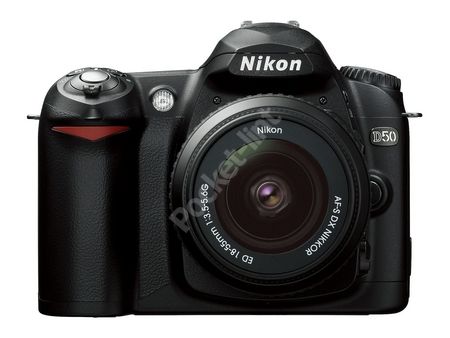Anyone considering getting into digital SLR photography today, but lacks the budget of a top professional, now has more options than ever to choose between. Canon's EOS 350D, Konica Minolta's 5D entry and Pentax's *ist DS are all ‘budget' D-SLRs offering enthusiast snappers a previously undreamt-of-at-the-price range of kit.
Our quick take
The D50 represents an ideal D-SLR for those first time D-SLR buyers on a more modest budget. Image quality, handling, responsiveness and key features strike an excellent balance, and while the D50 lacks some of the more advanced bits of the D70s, it is no slouch and so should be at the top of - or at the very least - near the very the top of your list if your in the market for such a camera.

Nikon D50 DSLR - 4.5 / 5
| FOR | AGAINST |
|---|---|
|
|
The Nikon D50 steps into the fray and comes hard on the heels of the D70s, the company's update of the D70, itself a camera that broke new ground in terms of ‘budget' D-SLRs. The new model looks very similar to the D70s utilising a similar 3000x2008-pixel, (6.1MP effective) resolution CCD and 12-bit A/D conversion.
You get three colour ‘spaces' to shoot in, the (default) IIIa sRGB colour mode for enhanced greens and improved landscape shots, then mode Ia (sRGB) is the camera's standard shooting mode while the camera's IIa mode provides Adobe RGB support. The other neat touch in the D50 is the camera's USB 2.0 connectivity. To boost the onboard memory it boasts SD/MMC removable storage. Unfortunately that means in this camera, Nikon has dropped CompactFlash Type I/II support.
By the time you read this, the camera should be available with an 18-55mm (the D70s's kit lens is a similar and slightly better 18-70mm optic), F3.5-F5.6 G zoom lens that means you can get snapping out of the box. However it is a tad soft, particularly at the edges. That said, the camera's new metering system, based on a 420-segment system seems to overexpose very slightly (around a third of stop) which presumably is there to help add the extra punch evident in the D50's images.
Overall control is very similar to the D70 and D70s but with a couple of tweaks. A single command dial, on the back right-hand side of the body, behind the large data LCD (which lacks a backlight) is joined by a curvy pop up flash unit. The flash sits on top of the viewfinder housing that also incorporates the accessory flash hot shoe. The viewfinder view is clear but seems quite small and dark in use.
The D50 boasts the same 2-inch colour screen as found on the larger D70s (the D70 had a 1.8-inch screen) and a set of back plate controls including play back, menu and delete buttons. A four-way jog button (for scrolling images and menus etc.) lacks a lock but is straightforward in use.
While there's not room to go into all the camera's many features here, it's fair to say they're comprehensive. In terms of image control, the camera provides a range of pretty standard image scene modes including full auto, portrait, and snow and macro settings. You do of course get a full range of manual controls including aperture and shutter priority.
You have sensitivity settings from ISO 200 to 1600 and an excellent auto white balance setting and the usual set of presets for daylight, fluorescent and tungsten lighting among others that also includes a simple, user defined setting for finer control.
Image quality is very good indeed with noise well controlled in low lighting, better even than on the D70 and D70s in my view. Punchier images are the name of the game and this is no surprise given the target market as it allows more colourful and better looking images straight out of the camera.
The AF system is good and I found reliable even in low light, where a bright AF illuminator kicks in. The D50's CCD is similar but not the same as that found in the D70s according to Nikon but with better noise reduction processing than the D70 and D70s. Overall then the images are good and certainly, the camera is capable of stunning results.
To recap
The Nikon D50 makes a stunning entry level model for those switching to digital from film or moving up from a digital compact.
